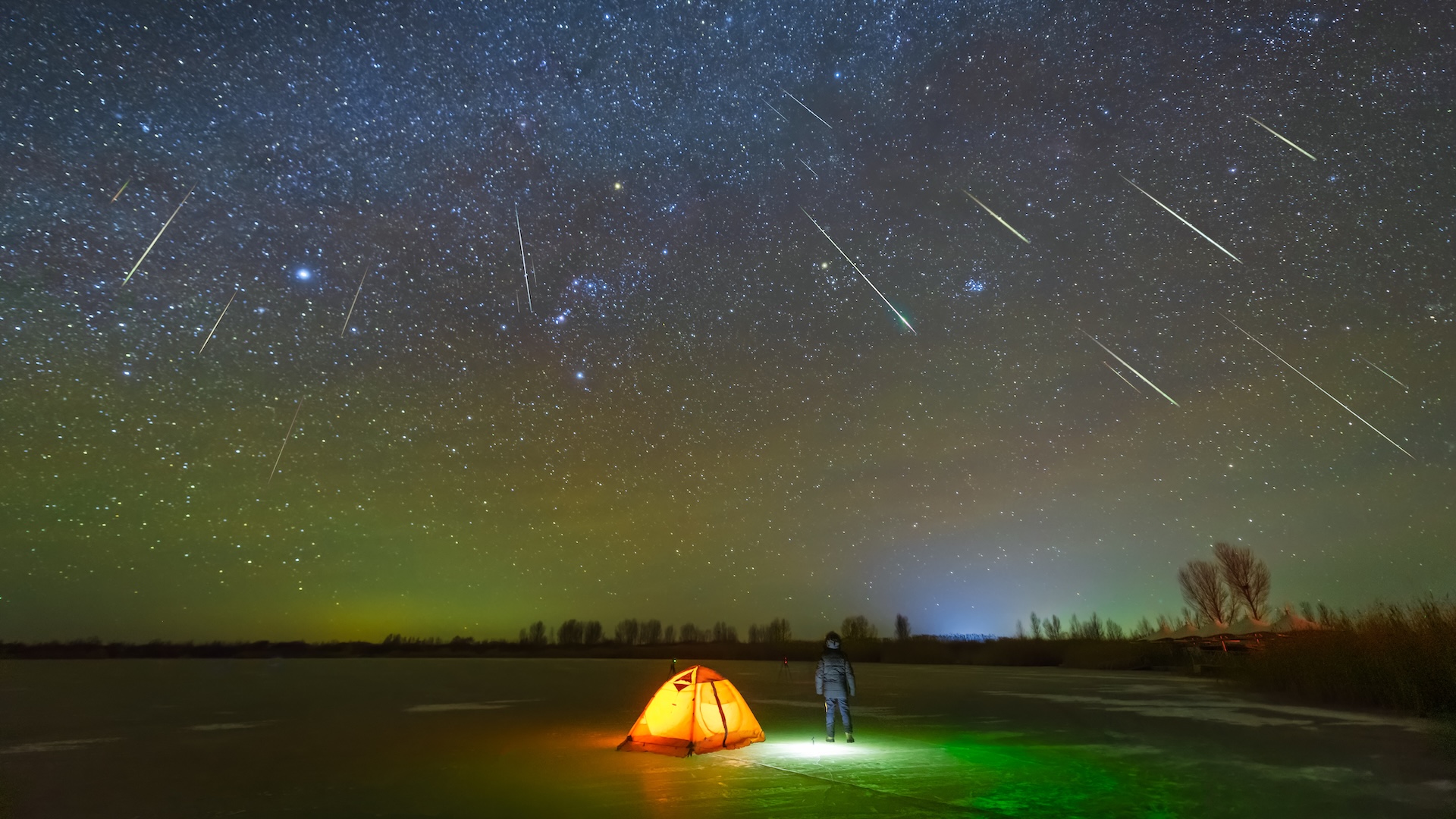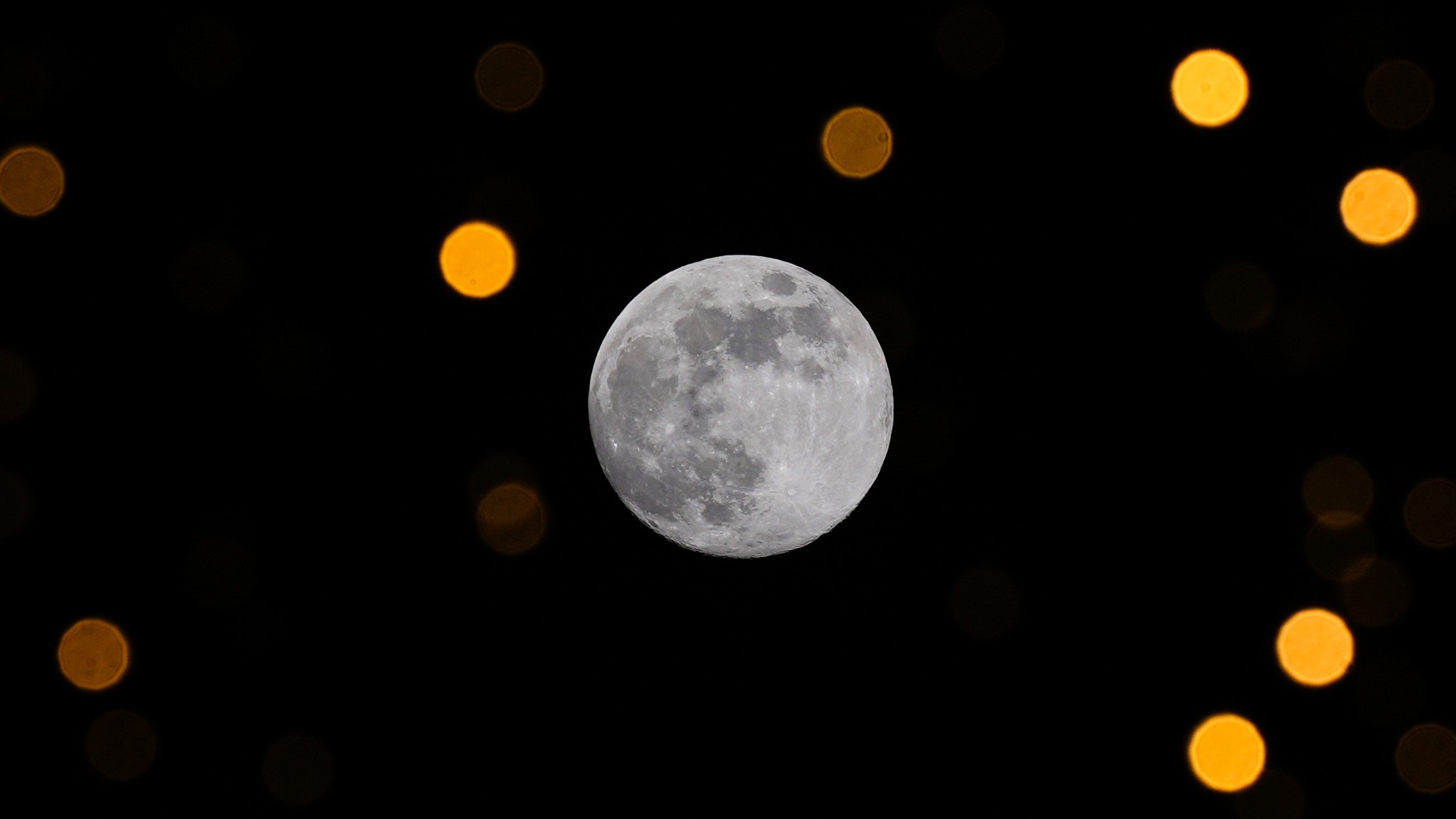Orionids 2025: Meteor shower caused by Halley's Comet peaks as two new comets cross the sky
Comets Lemmon and SWAN will be at their brightest just as the annual Orionid meteor shower produced by Halley's Comet reaches its peak.

Skywatchers are set for something special after dark on Monday, Oct. 20, through Tuesday, Oct. 21, when an annual meteor shower produced by Halley's Comet peaks just as two recently discovered comets reach their brightest points in the night sky.
According to the American Meteor Society, the Orionid meteor shower runs from Oct. 2 through Nov. 7, peaking on Oct. 20 to Oct. 21. That coincides with a new moon — when the moon is between Earth and the sun and is absent from the night sky — meaning the rare sky show should benefit from profound darkness. However, clear weather will still be required to see meteors and the brightening comets Lemmon (C/2025 A6) and SWAN (C/2025 R2).
The Orionids are the main event in fall's "meteor season," during which a host of minor meteor showers take place. Around 20 "shooting stars" per hour are expected during the Orionids' peak, with meteors hitting Earth's atmosphere at a speed of 41 miles per second (66 kilometers per second). The "shooting stars" can occur anywhere in the night sky, but if you trace them backwards, they will appear to come from a region of the night sky just north of the bright reddish star Betelgeuse in the constellation Orion — hence the shower's name. NASA calls the Orionids one of the most beautiful showers of the year.
Orionids are the product of Halley's Comet, which was last seen in the inner solar system in 1986 and will next be seen in 2061. The other meteor shower caused by Halley's Comet is April's Eta Aquariids.
While the Orionid meteor shower will be best seen in the hours after midnight on Tuesday, Oct. 21, the viewing window for the comets will take place much earlier the previous evening. Both comets will be in the post-sunset night sky and will be best seen an hour and a half after sunset — primarily with stargazing binoculars, but perhaps with the naked eye too if viewed from a dark sky site.
Comet Lemmon, which was discovered in January by the Mt. Lemmon SkyCenter observatory in Arizona's Santa Catalina Mountains, will be low in the northwest between the end of the handle of the Big Dipper and the bright star Arcturus. Comet SWAN, which was first spotted in September by NASA's orbiting Solar Dynamics Observatory, will be low in the south, just below the bright star Altair, one of the three stars in the famous Summer Triangle shape.
Get the world’s most fascinating discoveries delivered straight to your inbox.

Jamie Carter is a freelance journalist and regular Live Science contributor based in Cardiff, U.K. He is the author of A Stargazing Program For Beginners and lectures on astronomy and the natural world. Jamie regularly writes for Space.com, TechRadar.com, Forbes Science, BBC Wildlife magazine and Scientific American, and many others. He edits WhenIsTheNextEclipse.com.
You must confirm your public display name before commenting
Please logout and then login again, you will then be prompted to enter your display name.
